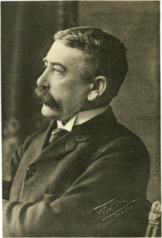In today’s fast paced, time pressed world, technology has proven a key asset in advancing communication. While its contribution has certainly improved the efficacy and speed at which messages are sent, it may not necessarily advance the clarity at which they are received. We are now able to connect with relative ease from numerous devices using various senses over multiple platforms. As these technologies become pervasive throughout our communicative society they replace prior methods and certainly diminish the frequency of direct interpersonal communication. These technologies, be it e-mail, texts, instant messages, or the like, have revolutionized how we interact with publics. And it is truly only when these technologies become the norm have they actually reached legend status. This notion is characterized by John Jackson, Greg Nielson, & Yon Hsu (2011) as “what is banal is magical” (p. 117). The idea that communication technology is taken for granted is perhaps why we treat it with such indifference in terms of engagement level. Our lexicon has become intensive requiring a plethora of acronyms and emoticons to expedite the meaning of our prose. However, this style of communication remains informal requiring communicators to ensure they continue to develop strong textual skill sets to convey meaning, persuade publics and resolve conflict. It is with the latter thought in mind that one questions if new generations will be at a disservice in terms of formal communication in a world often reduced to smiley faces and three letter responses.
Communication complexity is born of interpretation. Communication scholar Em Griffin notes that communication is not simply “bowling” where messages are directed one-way down a lane (2000, p. 50). It is much more complex according to Griffin, who compares the exchange to “Ping-Pong” whereby (2000), “one party puts the conversational ball in play and the other gets in position to receive. It takes more concentration and skill to receive than serve because while the speaker/server knows where the message is going, the listener/receiver doesn’t” (p. 50). This aspect of varying interpretations can at times be lost to the sender who believes they have crafted a clear, concise message with explicit direction. In the world of incessant corporate communications, it has become increasingly important for the sender to spend additional time crafting the message to ensure it does not get lost in translation. Albeit Griffin (2000) argues that “meaning is negotiated through the use of language…” and with negotiation there is always an aspect of give and take so perhaps added discussion is beneficial overall to the end result (p. 55). The concept of “meaning (as a) system of relations” is shared by Schirato & Yell (2000, p.19). The authors draw on renown Swiss linguist Ferdinand de Saussure’s perspective that “meaning is relational (more) than substantive” (2000, p. 19). According to Schirato and Yell (2000), Saussure’s view is that there is “no innate meaning attached to a language’s terms, only difference” (p. 19). We can then infer that it is differences in interpretation of a message’s meaning that can lead to conflict and confusion.
Improving textual message clarity and comprehension can be achieved by having the sender spend additional time drafting the message to suit his or her audience. However, the speed at which technology is advancing, combined with the volume of messages in transmission, may inhibit any real improvement in textual communication in the foreseeable future.
References:
Griffin, E. A. (2000). A first look at communication theory (4th ed.). Boston: McGraw-Hill Higher Education.
Image retrieved from http://www.theportugalnews.com/uploads/news/1112-43.jpg
Jackson, J. D., Nielsen, G., & Hsu, Y. (2011). Mediated Society: a Critical Sociology of Media. Oxford: Oxford University Press.
Schirato, T., & Yell, S. (2000). Signs and meaning. In Communication and Culture (pp. 18-33). London: Sage.


